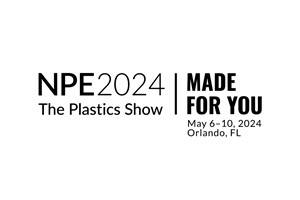Global Bioplastics Market to Grow 20%
Emerging low-carbon circular economy, stronger policy support for the bioeconomy, and increased consumer awareness drive expansion.
Demand for bioplastics is going nowhere but up. This is indicated by the increasing number of both players and materials that have emerged and on which we have been reporting. Moreover, the European Bioplastics association released its annual market data update at its 12th European Bioplastics Conference in Berlin in late 2017, which predicts the global market for bioplastics will grow by 20% over the next five years.
The results of the latest market study indicated that global bioplastics production capacity is set to increase from 2.05 million m.t. in 2017 to approximately 2.44 million m.t. in 2022. “The transition to a low-carbon and circular economy, stronger policy support for the bioeconomy, and an increased consumer awareness for sustainable products and packaging are driving the expansion,” said Francois de Bie, the association’s chairman.
Innovative biopolymers such as PLA (polylactic acid) and PHAs (polyhydroxyalkanoates) are the main drivers of this growth in the field of bio-based biodegradable plastics. PHAs are an important polymer family that has been in development for a while and that now has finally entered the market at commercial scale, with production capacities that are estimated to triple in the next five years.
These polyesters are 100% biodegradable, and feature a wide array of physical and mechanical properties depending on their chemical composition. Similarly, production capacities of PLA are also projected to grow by 50% by 2022 compared to 2017. A very versatile material, PLA features excellent barrier properties and is available in high-performance PLA grades that are an ideal replacement for PS, PP and ABS in more demanding applications.
Bio-based, non-biodegradable plastics, including the drop-in solutions bio-based PE and bio-based PET, as well as bio-based nylons/PA, currently make up for around 56% (1.2 million m.t.) of the global bioplastics production capacities. The production of bio-based PE is predicted to continue to grow as new capacities come online in Europe in the coming years. Intentions to increase production capacities for bio-based PET, however, have not been realized at the rate predicted in previous years. Instead, the focus has shifted to the development of PEF (polyethylene furanoate)—a new polymer that is expected to enter the market in 2020. PEF, on which we have recently reported, is comparable to PET but 100% bio-based.
Packaging remains the largest field for applications accounting for almost 60% (1.2 million m.t.) of the total bioplastics market in 2017. The data also confirm that bioplastics are already being used in many sectors including textiles, consumer goods and applications in automotive, and transport sector, and the agriculture and horticulture sectors.
Regarding regional capacity development, Asia remains a major production hub with more than 50% of bioplastics currently being produced there. One-fifth of the production capacity is located in Europe. This share is projected to grow up to 25% by 2022, with the European Commission’s commitment to the transition to a circular economy model expected to accelerate the momentum of growth and development of the bioplastics industry in Europe.
The market data update 2017 was compiled in cooperation with the German research institute nova-Institute. The data for the global production capacities of bioplastics is based on the market study “Bio-Based Building Blocks and Polymers” by nova-Institute (2018).
Related Content
Plastics Processing Index Cools with 45.3 April Reading
Processors are feeling impact of tariff uncertainty and market hesitancy as new orders slow
Read MoreProcessing Megatrends Drive New Product Developments at NPE2024
It’s all about sustainability and the circular economy, and it will be on display in Orlando across all the major processes. But there will be plenty to see in automation, AI and machine learning as well.
Read MorePlastics Index Shows Fourth Consecutive Monthly Gain
December reading hints at slowing contraction as plastics industry outlook improves
Read MoreProcessing Making Slow, Steady Progress
Plastics processing activity didn’t make its way into expansion territory in March, but seems headed in that direction.
Read MoreRead Next
Making the Circular Economy a Reality
Driven by brand owner demands and new worldwide legislation, the entire supply chain is working toward the shift to circularity, with some evidence the circular economy has already begun.
Read MoreBeyond Prototypes: 8 Ways the Plastics Industry Is Using 3D Printing
Plastics processors are finding applications for 3D printing around the plant and across the supply chain. Here are 8 examples to look for at NPE2024.
Read MoreSee Recyclers Close the Loop on Trade Show Production Scrap at NPE2024
A collaboration between show organizer PLASTICS, recycler CPR and size reduction experts WEIMA and Conair recovered and recycled all production scrap at NPE2024.
Read More













